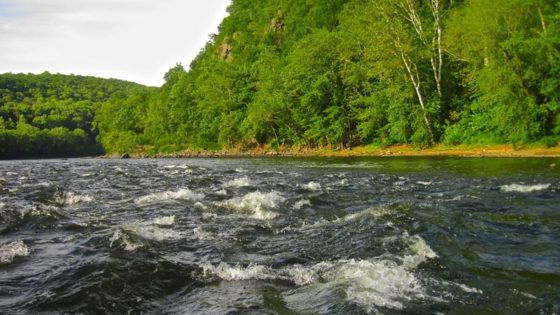McLaughlin, Christine. 2012. Ph.D. dissertation. University of Pennsylvania, Philadelphia.
Adviser: Louis A. Kaplan, Ph.D.
http://repository.upenn.edu/dissertations/AAI3542927/
Abstract
In stream ecosystems, dissolved organic carbon (DOC) influences microbial heterotrophic production and nitrogen (N) cycling. Since the surrounding watershed supplies the majority of DOC, understanding the terrestrial DOC flux is critical to determining the influence of hydrologic sources on N removal. However, the linkages between terrestrial export and stream DOC concentration and composition are poorly understood. This dissertation seeks to identify hydrologic sources, determine spatial and temporal patterns of DOC lability, and investigate the impact of terrestrial C quality on denitrification rates in a headwater stream in Pennsylvania. Stream water sources during baseflow and storm flow were identified using end-member mixing analyses. DOC concentrations predicted based on the derived source contributions were compared to observed concentrations to evaluate the importance of hydrology in controlling stream water DOC. Three baseflow groundwater sources were identified and one storm flow source. Higher observed DOC concentrations compared to predicted DOC concentrations suggest some mechanism of production during baseflow and the possibility of additional storm flow sources. DOC lability among terrestrial source waters and in stream water was measured using bioreactors colonized by stream microorganisms. Labile BDOC concentrations varied among sources declining as water percolated through the soil. Dissimilar storm dynamics were observed between two biological reactivity classes, labile and semi-labile BDOC, indicating different source pools. The impact of C quality on denitrification was evaluated using glucose amended stream water and storm-induced overland flow water in sediment perfusion core experiments. Glucose amendments had no effect on denitrification rates, but significantly greater denitrification was observed for the overland flow treatment suggesting either a threshold concentration of labile BDOC and/or that semi-labile BDOC has a greater stimulatory effect. The results described demonstrate the importance of considering the interactive effects of transport and biogeochemical processing in stream ecosystems. I argue that the impact of terrestrial DOC on stream ecosystem function depends on both the rate of DOC supply and the effect of C lability on biogeochemical processing. The removal of N from the stream ecosystem via denitrification is therefore ultimately connected to the dynamic changes in BDOC delivery from terrestrial sources.
Funding
NSF Award No. DEB-1052716 Title: LTREB: Trajectory for the recovery of stream ecosystem structure and function during reforestation. Principal Investigator: L. A. Kaplan. Co-principal investigators: A.K. Aufdenkampe, W.H. Eldridge, J.K. Jackson and J. Kan.


